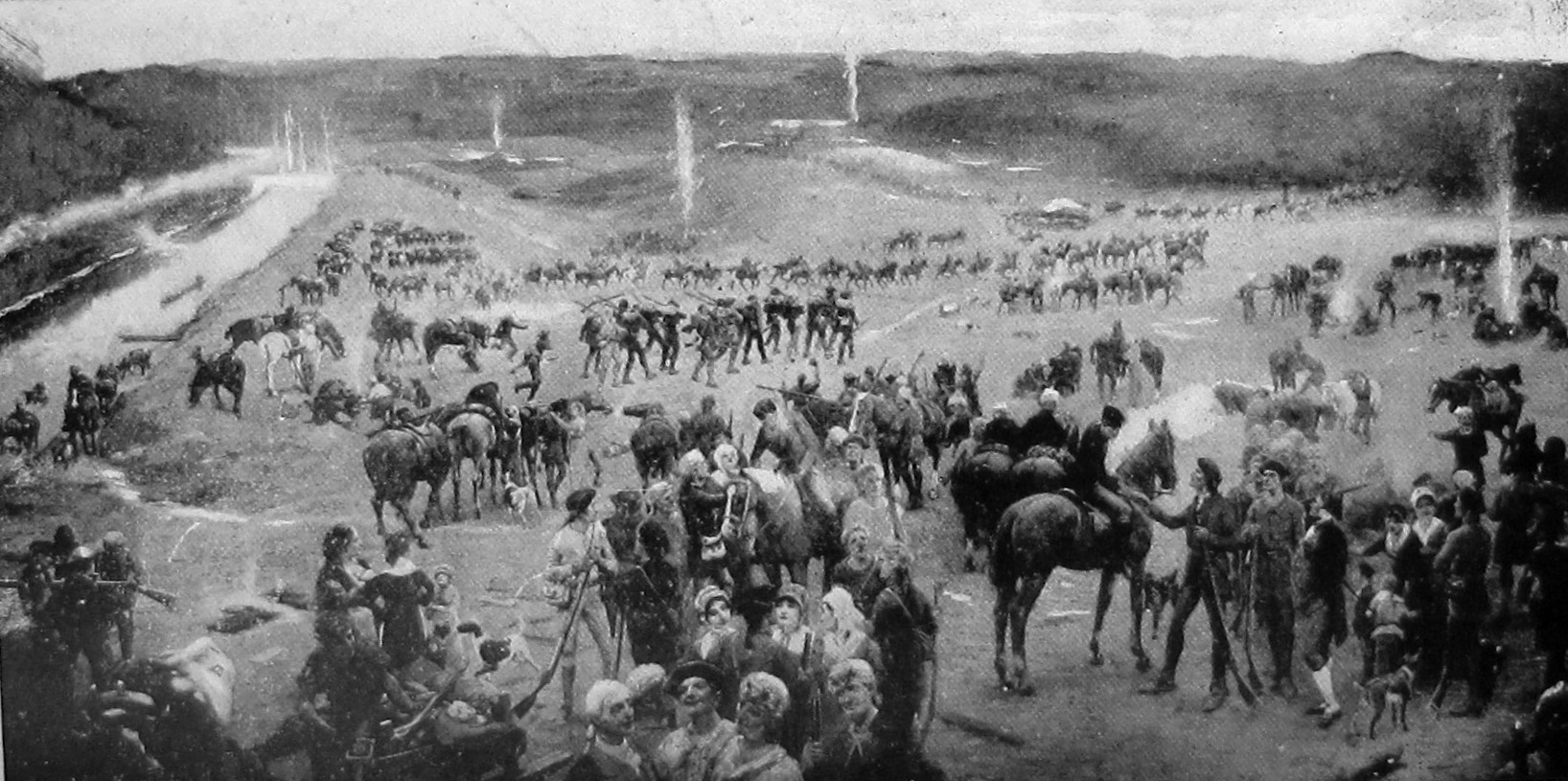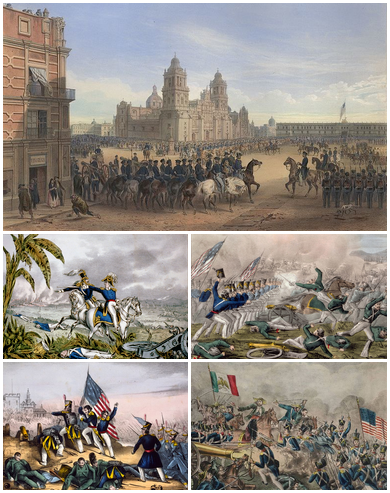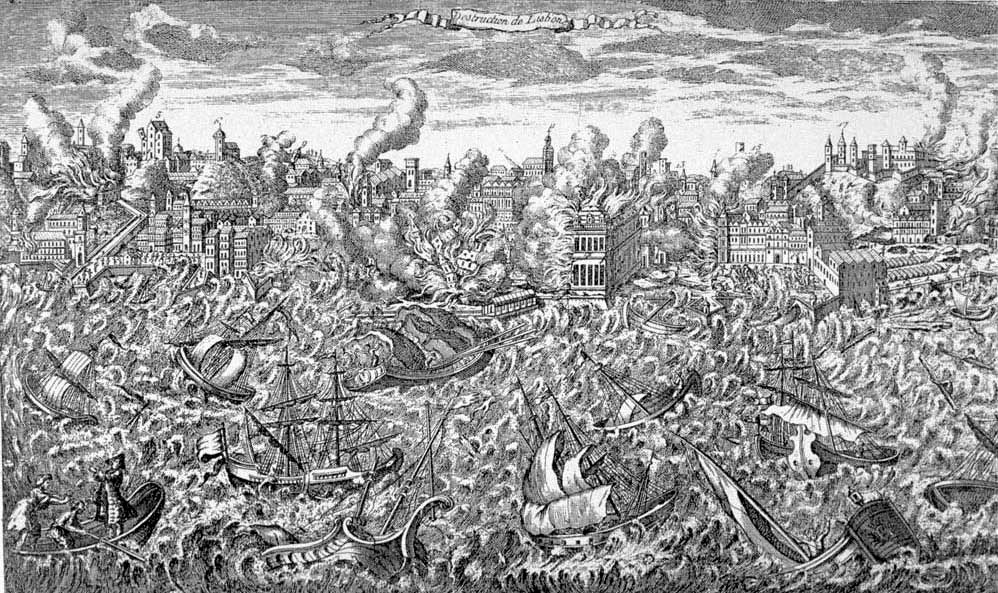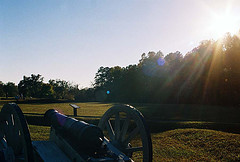|
Joseph McJunkin
Major Joseph Caldewll McJunkin (1755 – 1846) was an American Revolutionary War patriot serving in the battle of Kings Mountain, North Carolina. Joseph Caldwell McJunkin was the first son of Samuel Caldwell McJunkin and Mary Anne Bogan. Born 22 June 1755 in Carlisle, Cumberland County, Pennsylvania & died 31 May 1846 in Union County, South Carolina, he married Anne Jane Thomas 9 March 1779 in Union District, South Carolina. She was born 15 January 1757 in Cumberland County, Pennsylvania & died 17 March 1826 in Union County, South Carolina. He was brother of Daniel Mcjunkin. Revolutionary War Service In 1776, McJunkin volunteered in Col. John Thompson's Fair Forest Militia Regiment, where he engaged in the Cherokee campaign. In May, 1777, he was made Captain and commanded at Fort Jamieson. He served a three month guard tour in Charleston, South Carolina, from November 1779 to February 1780. After the fall of Charleston, and the Battle of Camden, the Tory and Whig Militias ... [...More Info...] [...Related Items...] OR: [Wikipedia] [Google] [Baidu] |
American Revolution
The American Revolution was an ideological and political revolution that occurred in British America between 1765 and 1791. The Americans in the Thirteen Colonies formed independent states that defeated the British in the American Revolutionary War (1775–1783), gaining independence from the British Crown and establishing the United States of America as the first nation-state founded on Enlightenment principles of liberal democracy. American colonists objected to being taxed by the Parliament of Great Britain, a body in which they had no direct representation. Before the 1760s, Britain's American colonies had enjoyed a high level of autonomy in their internal affairs, which were locally governed by colonial legislatures. During the 1760s, however, the British Parliament passed a number of acts that were intended to bring the American colonies under more direct rule from the British metropole and increasingly intertwine the economies of the colonies with those of Brit ... [...More Info...] [...Related Items...] OR: [Wikipedia] [Google] [Baidu] |
Battle Of King's Mountain
The Battle of Kings Mountain was a military engagement between Patriot and Loyalist militias in South Carolina during the Southern Campaign of the American Revolutionary War, resulting in a decisive victory for the Patriots. The battle took place on October 7, 1780, south of the present-day town of Kings Mountain, North Carolina. In what is now rural Cherokee County, South Carolina, the Patriot militia defeated the Loyalist militia commanded by British Major Patrick Ferguson of the 71st Foot. The battle has been described as "the war's largest all-American fight". Ferguson had arrived in North Carolina in early September 1780 to recruit troops for the Loyalist militia and protect the flank of Lord Cornwallis's main force. Ferguson challenged Patriot militias to lay down their arms or suffer the consequences. In response, the Patriot militias led by Benjamin Cleveland, James Johnston, William Campbell, John Sevier, Joseph McDowell and Isaac Shelby rallied to attack Ferguson an ... [...More Info...] [...Related Items...] OR: [Wikipedia] [Google] [Baidu] |
South Carolina Militiamen In The American Revolution
South is one of the cardinal directions or compass points. The direction is the opposite of north and is perpendicular to both east and west. Etymology The word ''south'' comes from Old English ''sūþ'', from earlier Proto-Germanic ''*sunþaz'' ("south"), possibly related to the same Proto-Indo-European root that the word ''sun'' derived from. Some languages describe south in the same way, from the fact that it is the direction of the sun at noon (in the Northern Hemisphere), like Latin meridies 'noon, south' (from medius 'middle' + dies 'day', cf English meridional), while others describe south as the right-hand side of the rising sun, like Biblical Hebrew תֵּימָן teiman 'south' from יָמִין yamin 'right', Aramaic תַּימנַא taymna from יָמִין yamin 'right' and Syriac ܬܰܝܡܢܳܐ taymna from ܝܰܡܝܺܢܳܐ yamina (hence the name of Yemen, the land to the south/right of the Levant). Navigation By convention, the ''bottom or down-facing side'' of a ... [...More Info...] [...Related Items...] OR: [Wikipedia] [Google] [Baidu] |
1846 Deaths
Events January–March * January 5 – The United States House of Representatives votes to stop sharing the Oregon Country with the United Kingdom. * January 13 – The Milan–Venice railway's bridge, over the Venetian Lagoon between Mestre and Venice in Italy, opens, the world's longest since 1151. * February 4 – Many Mormons begin their migration west from Nauvoo, Illinois, to the Great Salt Lake, led by Brigham Young. * February 10 – First Anglo-Sikh War: Battle of Sobraon – British forces defeat the Sikhs. * February 18 – The Galician slaughter, a peasant revolt, begins. * February 19 – United States president James K. Polk's annexation of the Republic of Texas is finalized by Texas president Anson Jones in a formal ceremony of transfer of sovereignty. The newly formed Texas state government is officially installed in Austin. * February 20– 29 – Kraków uprising: Galician slaughter – Polish nationalists stage an uprising in the Free C ... [...More Info...] [...Related Items...] OR: [Wikipedia] [Google] [Baidu] |
1755 Births
Events January–March * January 23 (O. S. January 12, Tatiana Day, nowadays celebrated on January 25) – Moscow University is established. * February 13 – The kingdom of Mataram on Java is divided in two, creating the sultanate of Yogyakarta and the sunanate of Surakarta. * March 12 – A steam engine is used in the American colonies for the first time as New Jersey copper mine owner Arent Schuyler installs a Newcomen atmospheric engine to pump water out of a mineshaft. * March 22 – Britain's House of Commons votes in favor of £1,000,000 of appropriations to expand the British Army and Royal Navy operations in North America. * March 26 – General Edward Braddock and 1,600 British sailors and soldiers arrive at Alexandria, Virginia on transport ships that have sailed up the Potomac River. Braddock, sent to take command of the British forces against the French in North America, commandeers taverns and private homes to feed and house ... [...More Info...] [...Related Items...] OR: [Wikipedia] [Google] [Baidu] |
The Women Of The American Revolution/Jane Thomas, Isabella Sims, Mrs
''The'' () is a grammatical article in English, denoting persons or things that are already or about to be mentioned, under discussion, implied or otherwise presumed familiar to listeners, readers, or speakers. It is the definite article in English. ''The'' is the most frequently used word in the English language; studies and analyses of texts have found it to account for seven percent of all printed English-language words. It is derived from gendered articles in Old English which combined in Middle English and now has a single form used with nouns of any gender. The word can be used with both singular and plural nouns, and with a noun that starts with any letter. This is different from many other languages, which have different forms of the definite article for different genders or numbers. Pronunciation In most dialects, "the" is pronounced as (with the voiced dental fricative followed by a schwa) when followed by a consonant sound, and as (homophone of the archaic pr ... [...More Info...] [...Related Items...] OR: [Wikipedia] [Google] [Baidu] |
Siege Of Ninety-Six
The siege of Ninety Six was a siege in western South Carolina late in the American Revolutionary War. From May 22 to June 18, 1781, Continental Army Major General Nathanael Greene led 1,000 troops in a siege against the 550 Loyalists in the fortified village of Ninety Six, South Carolina. The 28-day siege centered on an earthen fortification known as Star Fort. Despite having more troops, Greene was unsuccessful in taking the town, and was forced to lift the siege when Lord Rawdon approached from Charleston with British troops. The area is now protected as Ninety Six National Historic Site and was designated a National Historic Landmark. Many of the surviving Loyalists were later relocated by the Crown and granted land in Nova Scotia, where they named their township Rawdon to commemorate their rescuer. Background The British Army's "southern strategy" for winning the American Revolutionary War, which had been successful in taking Charleston and winning submission of much ... [...More Info...] [...Related Items...] OR: [Wikipedia] [Google] [Baidu] |
Nathanael Greene
Nathanael Greene (June 19, 1786, sometimes misspelled Nathaniel) was a major general of the Continental Army in the American Revolutionary War. He emerged from the war with a reputation as General George Washington's most talented and dependable officer, and is known for his successful command in the southern theater of the war. Born into a prosperous Quaker family in Warwick, Rhode Island, Greene became active in the colonial opposition to British revenue policies in the early 1770s and helped establish the Kentish Guards, a state militia. After the April 1775 Battles of Lexington and Concord, the legislature of Rhode Island established an army and appointed Greene to command it. Later in the year, Greene became a general in the newly established Continental Army. Greene served under Washington in the Boston campaign, the New York and New Jersey campaign, and the Philadelphia campaign before being appointed quartermaster general of the Continental Army in 1778. In Octo ... [...More Info...] [...Related Items...] OR: [Wikipedia] [Google] [Baidu] |
Ninety Six National Historic Site
Ninety Six National Historic Site, also known as Old Ninety Six and Star Fort, is a United States National Historic Site located about 60 miles (96 kilometers) south of Greenville, South Carolina. The historic site was listed on the National Register in 1969, declared to be a National Historic Landmark in 1973, and established as a National Historic Site in 1976 to preserve the original site of Ninety Six, South Carolina, a small town established in the early 18th century. It encompasses 1,022 acres of property. History The most common proposed etymology of the toponym Ninety Six is a reference to the distance in miles between the location and the Cherokee town of Keowee. Supporters of such an etymology have to struggle with the fact that the distance between the two locales is 78 miles. David P. George, Jr., has advanced the alternate hypothesis that Ninety Six is a reinterpretation of "the nine and six," a reference to two sets of southerly flowing streams—nine tributari ... [...More Info...] [...Related Items...] OR: [Wikipedia] [Google] [Baidu] |
Battle Of Cowpens
The Battle of Cowpens was an engagement during the American Revolutionary War fought on January 17, 1781 near the town of Cowpens, South Carolina, between U.S. forces under Brigadier General Daniel Morgan and Kingdom of Great Britain, British forces under Lieutenant Colonel Banastre Tarleton, as part of the campaign in the The Carolinas, Carolinas (North Carolina, North and South Carolina, South). The battle was a turning point in the American reconquest of South Carolina from the British. Morgan's forces conducted a Pincer movement, double envelopment of Tarleton's forces, the only double envelopment of the war. Tarleton's force of 1000 British Army, British troops were set against 2000 troops under Morgan. Morgan's forces suffered casualties of only 25 killed and 124 wounded. Tarleton's force was almost completely eliminated with almost 30% casualties and 55% of his force captured or missing, with Tarleton himself and only about 200 British troops escaping. A small force of the ... [...More Info...] [...Related Items...] OR: [Wikipedia] [Google] [Baidu] |
Historic Brattonsville
The Brattonsville Historic District is a historic district and unincorporated community in York County, South Carolina. It includes three homes built between 1776 and 1855 by the Brattons, a prominent family of York County. It was named to the National Register of Historic Places in 1971. Contributing properties The Revolutionary House, built in 1776 by Colonel William Bratton (who fought in the Revolutionary War), was originally a one-room log house with a small porch. Later additions were added to the original structure, and clapboard siding was placed over the original logs. The Homestead, Brattonsville's second house built about 1830 as the home of Dr. John S. Bratton, was significant as the center of an 8500-acre plantation. This 12-room, 2⅛-story antebellum mansion is an example of Greek Revival residential architecture. The interior features Adam mantels, exquisite dadoes, and a carved staircase. The Brick House, built in 1855, has a two-story brick façade with end c ... [...More Info...] [...Related Items...] OR: [Wikipedia] [Google] [Baidu] |
Patriot (American Revolution)
Patriots, also known as Revolutionaries, Continentals, Rebels, or American Whigs, were the colonists of the Thirteen Colonies who rejected British rule during the American Revolution, and declared the United States of America an independent nation in July 1776. Their decision was based on the political philosophy of republicanism—as expressed by such spokesmen as Thomas Jefferson, John Adams, and Thomas Paine. They were opposed by the Loyalists, who supported continued British rule. Patriots represented the spectrum of social, economic, and ethnic backgrounds. They included lawyers such as John Adams, students such as Alexander Hamilton, planters such as Thomas Jefferson and George Mason, merchants such as Alexander McDougall and John Hancock, and farmers such as Daniel Shays and Joseph Plumb Martin. They also included slaves and freemen such as Crispus Attucks, one of the first casualties of the American Revolution; James Armistead Lafayette, who served as a double ag ... [...More Info...] [...Related Items...] OR: [Wikipedia] [Google] [Baidu] |



.png)




